Text
Improve your efficiency with high-quality conveyor components from Conovey
Conovey offers a comprehensive range of conveyor components that ensure smooth operation, durability, and easy maintenance, optimizing your conveyor systems for maximum performance. For reliable conveyor solutions check their website.
0 notes
Text

Choose Conovey as Your Primary Conveyor Company You Can Trust
Conovey is a top conveyor company that offers unique and innovative solutions. They specialize in designing, manufacturing, and installing conveyor systems that cater to their clients distinct needs and ensure efficiency and reliability. Connect with them today for more information.
0 notes
Text
Browse the range of Material Handling Conveyor in Canada | Conovey
Conovey presents a diverse range of material handling conveyors in Canada. Known for their precision engineering, the company provides top-notch solutions for seamless material movement. Whether for industrial or commercial use, Conovey offers a variety of reliable conveyors to meet diverse requirements in Canada.
0 notes
Text
Conovey Spiral Conveyors | Hollitherm Spiral Conveyor Solutions
Explore Conovey's innovative spiral conveyors designed for optimal efficiency and space utilization. With their hollitherm spiral conveyor solutions, experience the versatility and reliability of spiral conveyors for smooth material handling. Visit the website to know more.
0 notes
Text
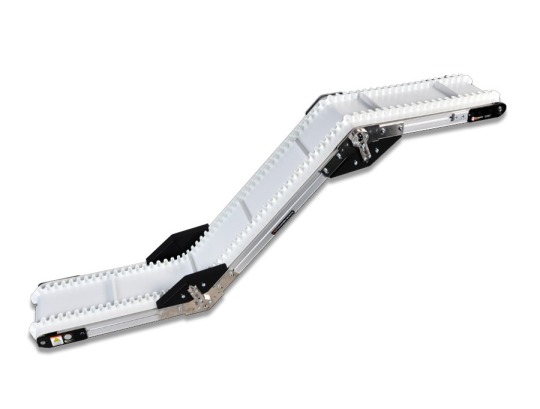
Manufacturers across North America are seeing major space and workforce shortages with the US alone seeing one of the lowest vacancy rates on record of just 3.0 percent, according to logistics real estate leader Prologis. This has more manufacturers looking at the low-profile conveyor to maximize current production space and implement automation.
These specialized conveyors have a short profile from the top to the bottom of the frame. The same holds true for highly configurable spacing between the edge of the conveyor frame and the edge of the conveyor belt. This is the key to floor space savings and machine or process integrations that may be sector specific.
Space savings is clearly a driver of the use of these small frame conveyors, but not the most predominant. Manufacturing sector needs where small products and automation are prevalent drive a great deal of adoption. This can include assembly, and packaging, food processing, metal stamping, and medical & pharmaceutical sectors.
Indexing conveyor systems are also fulfilling needs of small frame conveyors for these and other manufacturing sectors. This is particularly true where start/stop actions are a necessary part of the production process. The conveyor stops long enough for specific task completion (assembly, stamping, labelling, filling, or packaging) and then continues to the next process. These conveyors are also first choices for conveyor systems where machine integration and automation are prevalent, along with specialized packaging requirements and systems.
Source- https://www.conovey.com/understanding-the-versatility-of-the-low-profile-conveyor-in-modern-manufacturing/
0 notes
Link
Low profile and indexing conveyors support automation and robotics in addition to space savings for modern manufacturing.
https://www.conovey.com/understanding-the-versatility-of-the-low-profile-conveyor-in-modern-manufacturing/
0 notes
Text
Maximizing Food Packaging Line Production

The food packaging conveyor has specialized needs for the broader industry and even more specific needs based on product types and production environments. High throughput, while minimizing finished product damage, is crucial to every food packaging manufacturer. That requires wrapping, labeling, packaging and cartoning to be efficient and effective.
Not all food conveyor manufacturers have deep expertise and understanding of the needs for packaging line conveying equipment that is ideally suited for food packaging. The question for food packaging production environments is how to maximize their food production line with the right food packaging conveyor belt from the right manufacturer.
Understanding food packaging conveyor belt needs go far beyond wipe-down, wash-down, and sanitation requirements, but this is a good place to start. The food packaging conveyor has many specific needs to be ideal for its use and avoid major challenges that can affect production, costs, and regulatory compliance.
Every food packaging conveyor must meet wipe-down or heavy wash-down criteria, where cleanliness and sanitation are a critical factor. Leading conveyor manufacturers typically design their heavy wash-down conveyors and wipe-down conveyor systems of stainless steel, or plastic where food encounters the conveyor. Aluminum conveyors can also be found where food contact is not an issue.
The ability to use high pressure water along with cleaning agents daily without adversely affecting conveyor components is crucial to meeting hygiene, production, and maintenance needs. This means that the entire system from the motor assembly to control electronics must also withstand the same cleaning regimen.
Food production and packaging manufacturers that make the wrong choice or have don’t have the optimum food packaging conveyor design can experience:
Back-ups and jamming
Spillage
Damage
Waste
Food conveyor manufacturers that collaborate with their customers can create designs that avoid staging and feed problems that can lead to problems with:
Shrink wrapping or flow wrapping
Labeling and date stamping
Manufacturers can compromise product quality, speed of throughput, and cost-efficiency of the packaging line if they don’t use conveyors specifically adapted for handling food products.
In modern food manufacturing, product orientation and transfer capabilities are vital. The ability to rotate the product for proper labeling and stamping is a critical aspect of production flows and product accuracy. This is where automation comes in to varying degrees to support food packaging.
Source: https://www.conovey.com/maximizing-food-packaging-line-production/
0 notes
Text
Meeting Changing Food and Beverage Packaging Needs
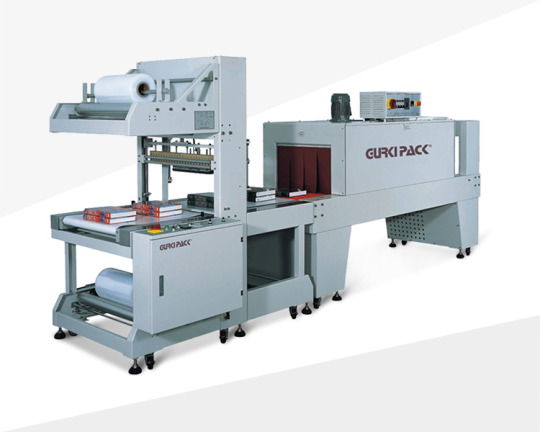
Businesses will need to rethink their manufacturing processes and packaging methods to meet changing market, supply chain and consumer demands. This is true across food and beverage manufacturing, fulfillment, and ecommerce where sustainability is vital to continuing business models for food manufacturers, processors and packaging companies package their products.
Companies need to use automation to meet production schedules where low impact packaging is vital to cost, sustainability and product quality. The right shrink wrap machine working in various stages independently or in parallel with a carton erector and automatic tray former machine can help to lower packaging costs.
The ability to reconfigure these machines can lower cardboard content for some products where shrink wrap can complete the stable product shipping needs. They also play an important part in maximizing food production line packaging. Various forms of the shrink wrap machine are also playing a greater role in agricultural food processing by maintaining freshness in short delivery cycles. They also help to reduce costs and waste where corrugated packaging alone was once used.
Sustainability Initiatives like single use plastic reduction, the growth of recycled paper and cardboard packaging, and reduced packaging volumes are becoming mandates for many manufacturers. These process changes can be positively affected by the use of a shrink wrap machine, carton erector, and automatic tray former machines in conveyor production lines. They do this by providing flexible and agile options that can lower packaging solution costs via their reconfiguration ability.
Source: https://www.conovey.com/meeting-changing-food-and-beverage-packaging-needs/
0 notes
Text
Importance of Material Handling Conveyor Assessments
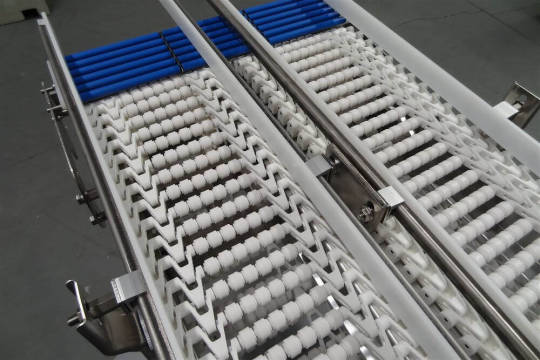
The material handling conveyor plays a broad and foundational role in many manufacturing environments, so constant assessment of operation is vital to avoid wide ranging challenges. Today’s belt conveyor market is extremely broad and varied in terms of models and use, longevity, process matching and maintenance. This makes it critical that the first assessment of environment and need come from the partnership between the original conveyor designer/installer and the production manufacturer.
There are broad variabilities in belt types ranging from heavy duty to light duty, along with the complexity of component and product designs that range from fabric and rubber to steel mesh and plastic polymers. That means any single blog on assessment will have to be reasonably specific. Rather than the entire conveyor system, this blog will concentrate on the importance of conveyor belt assessment.
Toothed sprockets drive plastic modular and metal belt conveyors, while fabric and flat belts use a pulley or drum system. But every belt has design limitations, which require matching the belt to the application. Even within the broader area of the material handling conveyor, transfer conveyors can bring their own assessment needs to the broad assessment of the conveyor belt.
All belt conveyor systems should receive a thorough review at least once per year, but that should happen more often depending on factors like:
Belt age and type
How you use the belt
Material and product type, size, and weight
Use cycles that depend on the industry
Industry cycles and product focus are two areas where, for example, material handling conveyors in food and beverage or ecommerce bring production peaks, valleys, and product variance that all affect an assessment schedule. For practicality’s sake, let’s start with the definition of a light duty material handling conveyor assessment focused on the conveyor belt.
What Is A Material Handling Conveyor Assessment?
While all assessments should be a comprehensive look at all system components, general belt assessments are one part of that look. This will include everything from daily or weekly visual inspections to more comprehensive assessments that involve special tools and technologies. They all require a high degree of expertise in understanding the specific design and components as provided by the manufacturer.
Source: https://www.conovey.com/importance-of-material-handling-conveyor-assessments/
0 notes
Text
How Conveyor Designs Can Borrow From Flexible Assembly Lines
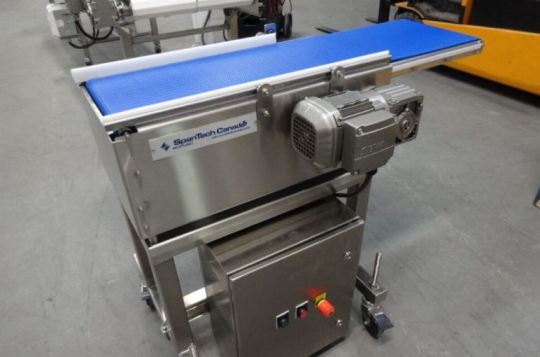
Conveyor systems have been around since the dawn of the 20th century. But it’s their ability to keep pace and anticipate future needs that make them the foundation of modern manufacturing. That requires the refinement of accepted design innovations like modular conveyor designs through manufacturers like Spantech conveyors. The modular nature of the conveyor system enables both customization and standardization of sections. Another integral feature in modern modular designs that delivers many benefits is the use of plastic chain technology.
While modular conveyors have been a breakthrough design begun in the 1980s, their latest refinements from leaders like Spantech enable them to deliver both standardization and innovation. This evergreen approach has delivered much the same shot in the arm to manufacturing as flexible assembly lines.
Just as modular designs meet shifting manufacturing and customer needs, flexible assembly lines do the same. By looking at both, we can see how they intersect and benefit from each other in furthering modern manufacturing adaptability.
Flexible assembly lines and modular conveyors are both designed to meet shifting manufacturer and customer demands. Belt composition, modular components, transfer capabilities, guidance controls and motor designs have led or follows flexible assembly line innovation. The two are actually symbiotic because their integration is beneficial to both. Spantech conveyors are an ideal example of how a conveyor system can adjust to accommodate production line changes while minimizing downtime.
The retractable conveyor is one example of modular conveyor components that deliver broad flexibility into manufacturing. These conveyors allow one end to shorten or lengthen depending on needs. This can help to distribute products across another conveyor, change product orientation, or even improve quality control. Modular Spantech conveyors benefit and use retractable conveyor sections as one of many components that enable customization with the cost control of standardization.
Source: https://www.conovey.com/how-conveyor-designs-can-borrow-from-flexible-assembly-lines/
0 notes
Text
Why Choose a Plastic Chain Conveyor

Leading conveyor suppliers are increasingly seeing manufacturing customers turn to plastic chain conveyors. This growing trend has a lot to do with the versatility that today’s plastic modular conveyor belts bring to a host of manufacturing sectors, but particularly to food and beverage and pharmaceuticals. This versatility makes them a top choice for these expansive sectors that rely on conveyors for production and packaging.
The different choices in conveyor construction materials all have their benefits in certain use cases and environments. What many companies find is that plastic modular conveyors offer what may be the broadest set of benefits. When choosing conveyor systems in Canada and the USA, that versatility makes it easier to find the most cost-effective, adaptable, and durable solution.
But there are many variables to consider when designing and choosing the right conveyor system for a company. These variables make it challenging for many conveyor suppliers to meet every single developing production line need. When looking at the inherent versatility of plastic chain conveyors, the strengths make it a standard-bearer for food and beverage among others.
Flexibility Through Modular Construction
First up is flexibility, which goes to the heart of meeting the limitations of space and production cycle needs where plastic chains provide more options. For Conveyor Manufacturers in Canada, also serving USA customers doesn’t bring any specific differences. The chief commonality between the needs of the two markets is both require conveyor designs that are adaptable to any environment.
Plastic modular designs also make it easier to create the ideal conveyor where sections can be easily replaced or repaired when needed. But these conveyor suppliers must still create systems that maximize durability and longevity.
Conovey, which supplies conveyor systems in Canada and the USA, supplies some of the most innovative plastic chain and wire mesh conveyor manufacturer lines in the world such as SpanTech. SpanTech alone boast over 200 link types that allow them to match customer products to meet specification needs. There plastic links and plastic modular conveyors are among some of the most durable and long-lasting in the industry.
Durable And Light For Long Life And Low Cost
That need for durability enables companies to minimize costs after implementation. The result is that the best of these conveyor suppliers (like SpanTech and others) develops systems that not only last long but are easy to maintain. This enables Conovey, who supplies a long list of the best manufacturer supplying conveyor systems in Canada and the US, to meet highly specific needs and custom designs.
The modular aspect of plastic conveyors makes it easy to replace sections in minutes when and if the rare need arises. The sprocket design of plastic chain conveyors rather than pulleys eliminates the common belt tracking issues and enables products to maintain their integrity and position throughout the system. Leading plastic conveyor systems can handle hundreds of pounds but are also very light, which lowers electricity costs for keeping the conveyor moving and meeting specific production cycles and changeovers.
Source: https://www.conovey.com/why-choose-a-plastic-chain-conveyor/
0 notes
Text
The Changing Role Of The Food Conveyor In Modern Manufacturing

While it may seem that the food packaging conveyor is just an efficiency tool in modern manufacturing, supply chain and market needs tell a different story. Then there are the precision needs of industry 4.0 manufacturing where automation relies on their precision and regularity that goes beyond that of human handlers to meet its process and throughput needs.
The ability to present the product to the machinery at the right time and the right way is vital to food production and packaging. Food conveyor manufacturers have responded by developing new technologies in belting and motion control to meet today’s high demand and subsequent production throughput needs. This includes development of electrical control systems that ensure seamless integration with production packaging systems.
The role of the conveyor in modern manufacturing is about more than just the need for throughput, speed, and accuracy. It’s equally about the need for food conveyor manufacturers to design conveyors that move products gently and securely. While product damage and slowdowns are major concerns, so too is the reality that even automated production lines require levels of human intervention.
Conveyor systems that cannot meet stringent guidelines for safety and accuracy in throughput, can cause production worker injuries and inefficiency. These incidents can result from cascading problems that start with jams and spacing issue. While workforce safety is paramount, machine and product damage are also major disasters to avoid at all costs.
The design and operational efficiency of the food conveyor has a major impact on meeting regulatory compliance needs regarding food safety. This is true when conveyor belt segments transport raw materials to a processing area while other segments transport finished products for packaging and shipment.
This is true for food packaging conveyor system segments and food production conveyor segments. Each segment may have different food safety and quality throughput management needs. But since they are part of one holistic system in food and beverage manufacturing, food conveyor manufacturers must be capable of providing very agile and customizable design to meet these varied needs.
Conveyor coordination in food production and packaging requires flexible equipment that facilitates fast changes to packaging and processing lines. This requires a true partnership between food production and conveyor manufacturers. The most sought-after food conveyor manufacturers have the knowledge and experience to create designs and systems that account for:
Product size, throughput, process, and formulation changes.
Growing production capacity
Changing package formats, sizes, and materials
Source : https://www.conovey.com/the-changing-role-of-the-food-conveyor-in-modern-manufacturing/
0 notes
Text
The Outrunner: Spiral Conveying Re-Thought - CONOVEY
The OutRunner Spiral Conveyor is simply the most advanced and reliable spiral system ever built. Features include: Chain widths from 4 - 50 inches, Virtually unlimited number of tiers, Choose any tier clearance, Open and clean “cage-free” design, Every tier is positively driven resulting in consistent low tension, and Fully captured chain means no finicky dancer assembly required, etc. For more info about the spiral conveyor manufacturer in Canada, visit: https://bit.ly/2UTxcwu #spiralconveyor https://www.youtube.com/watch?v=B8MhQko6TtE
0 notes
Text
Discovering the Latest Trends in Conveyor Design
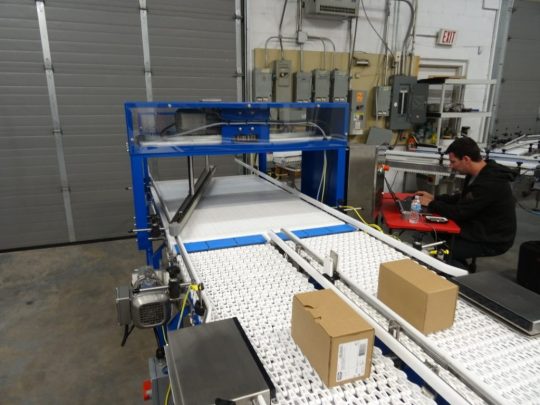
Whether you’re transporting bulky and heavy items or just small items, you need a conveyor system that improves overall operations and brings you closer to making your factory leaner and smarter. Nowadays, when you go looking for conveyor options you are presented with sleek, efficient, and flexible machines that fit in small locations and handle a variety of tasks that goes beyond moving product from point to point.
Conveyor suppliers in Canada have multiple options to offer, but before you choose what’s right for your factory you need to watch for these growing trends in conveyor technology.
Keeping It Quiet
Loud noises are a work hazard and wherever possible, one should take the right measures to minimize the hazard. You, therefore, do not want a conveyor that adds to the noise that is generally produced in an industrial setting. For example, the technology used in Span Tech conveyors are designed to run smooth and produce less then 45dB of noise, including their chain conveyors. The lower the noise, the easier it would be for workers to perform activities in its close proximity and also helps reduce the number of distractions in the workplace.
Flexible and Multiple Uses
Single conveyor with multiple uses is more desirable over multiple conveyors or conveyors that require complex changeovers for every process. For example, the Traffic Cop conveyor automatically merges two lanes of product into a single lane of output regardless of whether their sizes/weights are uniform or not. Similarly, the Automation Series from QC Conveyors comes with multiple configurations that can be easily set up to allow maximum flexibility. The same can be said about the IS175-ID from the Industrial Series of QC Conveyors that comes with an internal 24v DC motor that allows these conveyors to fit in the smallest of places.
1 note
·
View note
Video
youtube
CONOVEY ARB Technology with Sanitary Framing
Our ARB conveyors combine all of the features and benefits of Intralox designed ARB technology with our extensive knowledge of sanitary design to produce an ARB technology well suited for food plant applications. Our ARB systems facilitate small footprint 90 degree turns and can align, merge and lane your products with ease. Clean features include: popout key slotted return rollers, fully welded frames, ground, polished and glass beaded welds, welded stand-off spacers, minimization of flat surfaces, clean UHMW carry way support system, clean ARB activation zones, polymer bearings with caps and stainless steel inserts, and more!
For more info visit: custom built conveyors
1 note
·
View note
Link
Our conveyors combine all of the features and benefits of Intralox’s Activated Roller Belt™ (ARB™) technology with our extensive knowledge of sanitary design to produce a conveyor well suited for food plant applications.
1 note
·
View note
Video
youtube
Posidrive Ice Cream Spiral Conveyor - CONOVEY
Welcome to an "Evolution in Revolution". We are showcasing our new Ashworth PosiDrive technology in partnership with Ashworth Brothers. The unique cage design of the PosiDrive Spiral system engages the inside belt edge maintaining product orientation and simplifying belt speed control. Visit CONOVEY's website for more info about Spiral Conveyor.
1 note
·
View note